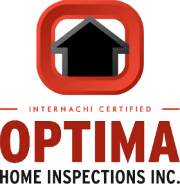Termites can be a homeowner’s worst nightmare, especially in places like Poughkeepsie where conditions are often conducive to an infestation. Knowing how to spot the signs and prepare for a termite inspection can save you both time and money. In this guide, we’ll walk you through the essentials of ensuring your home is ready for its termite checkup.
Understanding Termite Behavior and Habitat
Termites are small but highly destructive pests. They thrive in environments where they can find wood and water, making many homes a perfect target. Understanding their behavior and habitat is crucial for early detection. Termites are known to create complex colonies underground, with sub-terrain nests that shield them from predators and extreme weather conditions. These colonies can house anywhere from a few hundred to millions of termites, working tirelessly in a well-organized system. Their primary food source is cellulose, found abundantly in wood, which is why they prefer damp, dark areas such as basements and crawl spaces.
In Poughkeepsie, the climate can be particularly hospitable to termites, especially during the warmer and wetter months. Given the right conditions, termites can establish a thriving colony within weeks, making quick action vital. These insects are always on the lookout for vulnerable wood to consume, significantly increasing the risk of infestation for homeowners. By learning about their natural predispositions, you can better strategize and reduce their likelihood of invading your property.
Common Signs of Termite Infestation
Spotting the signs of termites early can prevent costly repairs down the line. Look for tell-tale signs such as mud tubes, hollowed or damaged wood, and discarded wings around your home. Mud tubes are one of the most visible indicators of a termite presence. These pencil-thick passageways serve as protective tunnels for termites, allowing them to travel safely from their nest to a food source.
Termites are also notorious for leaving behind hollowed wood. As they consume the cellulose, they typically leave only a thin veneer at the surface, making affected wood sound hollow when tapped. Discarded wings are another red flag, often left behind by swarming termites looking to establish a new colony. These swarming events usually occur during warm days when humidity is high. After mating, these termites lose their wings, leaving them scattered around windowsills and door frames.
Understanding these signs not only aids in early detection but also helps you communicate more effectively with professional inspectors. If left unchecked, a termite infestation can cause severe structural damage, compromising the value and safety of your home. Being vigilant about these signs is your first line of defense against these destructive pests.
Why Regular Inspections Are Important
Regular termite inspections serve as a proactive measure in protecting your investment. It’s important to schedule these inspections regularly to catch any infestations early and manage potential risks. Termite damage is not always immediately apparent, especially to the untrained eye, so professional input is invaluable.
Professional inspectors can assess both visible and hidden areas of your home, using specialized tools and expertise to detect termites early. By catching an infestation in its infancy, you can implement treatment before significant structural damage occurs. The cost of regular inspections is dwarfed by the potential savings associated with averting extensive repairs. Moreover, integrating inspections into your home maintenance routine fosters peace of mind, knowing you are taking steps to protect your home against these tenacious invaders.
How to Prepare Your Home for an Inspection
Preparing for a termite inspection involves a few simple steps. Ensure that the inspector has easy access to your basement, attic, and crawl spaces. Remove any obstacles that could block their path. These spaces are often prime locations for termite activity, and unrestricted access allows inspectors to conduct a thorough evaluation.
Additionally, tidy up the exterior of your home; clear away debris, wood piles, or any other materials that might attract termites or obscure visual assessments. Inside, rearrange furniture if needed and ensure that all entry points to basements or attics are accessible. These small preparations ensure that inspectors can maximize their effectiveness, increasing the likelihood of early detection.
Choosing a Reliable Termite Inspector in Poughkeepsie
Selecting a reliable inspector is crucial. Look for licensed professionals with good reviews and a solid reputation in the Poughkeepsie area for effective and thorough inspections. A good inspector will provide a detailed report, highlighting areas of concern and offering guidance for preventative measures going forward.
In your selection process, consider reaching out to local resources for recommendations. Ask about the inspector’s experience, qualifications, and familiarity with the local environment and common pest issues in Poughkeepsie. Choosing the right professional ensures that you receive accurate information and effective solutions tailored to your home’s specific needs.
Ensuring a Termite-Free Home in Poughkeepsie
Termite inspections are an essential step in maintaining the integrity and safety of your home. By understanding the signs of termite activity and knowing how to prepare for an inspection in Poughkeepsie, you can protect your home against potential damage. Remember, early detection and regular inspections are your best defense against these silent invaders.


